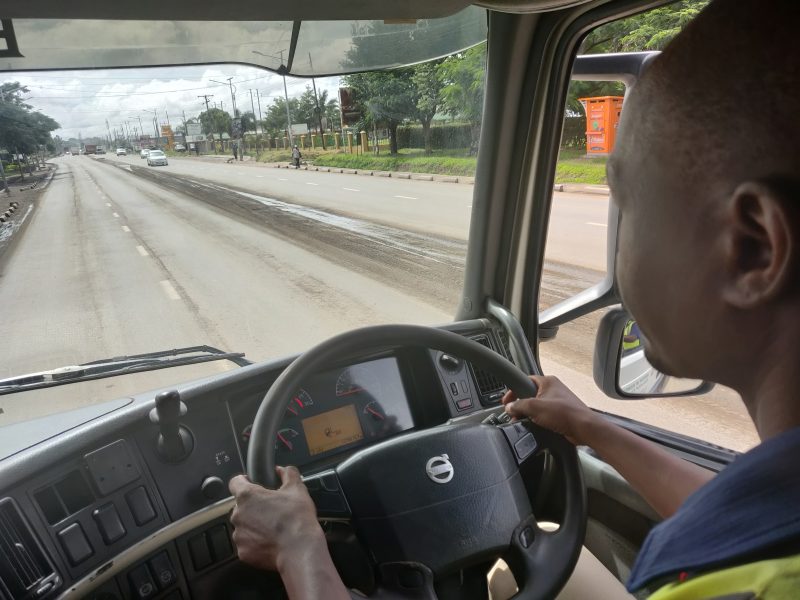International development organisation Transaid has secured funding from Puma Energy Foundation for a major new professional driver training programme in Ghana – taking its successful road safety work to West Africa for the first time.
The three-and-a-half-year project will raise training standards and expand training capacity for heavy goods vehicle (HGV) drivers, with the aim of reducing road traffic fatalities and injuries in the country – vital work given an estimated 7,000 people lost their lives on Ghana’s roads in 2016, according to the World Health Organisation.
Transaid is ideally placed to implement the programme, which began in February, thanks to its track record working with local partners to improve the driving standards of 50,000 commercial vehicle drivers across Zambia, Tanzania and Uganda since 2008 – and thanks to the enduring help and support of the UK transport and logistics industry.
Key to the success of the professional driver training programmes has been the involvement of Transaid’s UK corporate members, which has seen staff seconded to several countries in sub-Saharan Africa to share their knowledge, skills and best practice with local teams and provide much-needed equipment and funding on the ground.
Almost 95 per cent of freight is transported by road in Ghana and with heavy goods traffic expected to increase in coming years, there are concerns there will not be enough experienced, qualified drivers to safely meet the growing demand – and what this could mean for road safety.
Caroline Barber, CEO of Transaid, says: “We have seen first-hand the huge and positive impact our professional driver training programmes have had in sub-Saharan Africa, so to be able to expand this lifesaving work into Ghana, and benefit thousands more drivers, is really welcome news. It is our fundamental belief that every driver should be able to leave for a day’s work without the fear that they may not come home due to a lack of training, or dangerous vehicles and roads.”
One of the key objectives of the programme is to develop an enhanced driver training curriculum specific to HGV drivers, and push for its adoption at a national level by the Ghanaian government – to ensure consistency of training standards across the country with the aim of saving lives. Through its hallmark ‘Train the Trainer’ model, Transaid will build local skills to ensure sustainable and lasting change. The provision of quality professional driver training will be expanded, to increase access and ensure that drivers are trained to the highest standards – in turn, improving their access to future jobs and helping to drive economic growth.
Barber adds: “With heavy goods traffic on Ghana’s roads set to increase, action is needed now to save lives. And that is exactly what our programme is designed to do: ensure a safe and sustainable transport sector underpinned by a skilled workforce, improving outcomes for drivers and making Ghana’s roads safer for all.”
Vincent Faber, Executive Director of the Puma Energy Foundation, says: “We are honoured to collaborate with Transaid, a partner with whom we share the vision and commitment of promoting road safety. Transaid’s driving training programme for HGV drivers aims at setting higher safety and quality standards in Ghana’s transport sector and make it an important pillar in the economic development of the country. We are confident that our partner’s consolidated expertise in developing transport projects in Africa will help unfold an impactful solution to improve the safety of all road users.”




